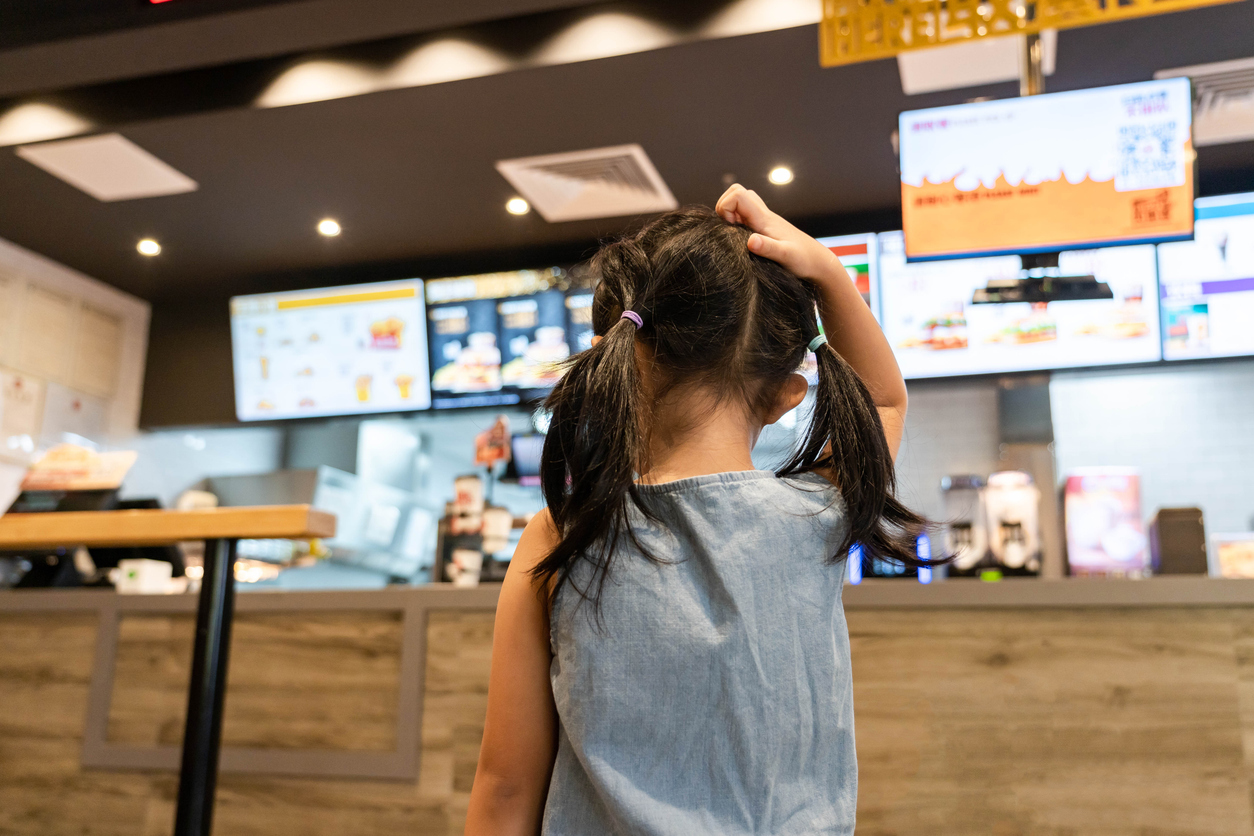Tired of food waste swallowing your restaurant profits? AI smart food inventory management is transforming the way businesses track, order, and handle ingredients. It's like having a digital kitchen assistant—an active one that keeps track of every ingredient perfectly, predicts with exacting precision what you will need before running out, and so on. From cafes to some large restaurant chains, these owners are saving 40% of waste, along with precious time and money, all thanks to the same technology.
Perhaps most importantly, you do not need to be a tech wizard to apply it. The AI of today is as simple to use as your smartphone but powerful enough to transform how you manage inventory in the kitchen from start to finish.
What Is AI Food Inventory Management?
AI Food Inventory Management is an intelligent system using artificial intelligence for the monitoring and management of food supplies in restaurants, cafes, and other food businesses. In simple terms, it does the following:
- Keeps a check on all the food items 24/7
- Automatically orders the required stock
- Quantity of orders changes based on sales pattern
- Tracks expiration dates to reduce waste
- Calculates food costs accurately
- Shows clear reports
The system will act like a smart assistant, which remembers every detail concerning the inventory for your business. It learns from the business pattern, which makes wiser decisions for you. It lets you check your inventory from your phone or computer at any given time. It saves you money by reducing waste and making sure you never run out of important ingredients.How AI Is Transforming Food Inventory ManagementAI is changing how restaurants manage their food supplies. It helps them know what they have so they don't overbuy or underbuy. For instance, Olive Garden can predict the number of pasta dishes that they will require by using past sales data, thus reducing wastage and saving money. For example, Chipotle can use AI to analyze orders from customers and adjust their inventory accordingly, always having fresh ingredients on hand. AI is changing how restaurants manage their food supplies. It helps them keep track of what they have, so they don't buy too much or too little.Benefits Of AI Food Inventory ManagementAI-powered food inventory management offers endless advantages that can change the way businesses operate. It cuts down food waste, increases accuracy, optimizes stock levels, and saves costs for businesses. Let's dive into some of the benefits:Reduce Food WasteAI systems excel at reducing food waste, which is one of the biggest challenges for food businesses. By tracking inventory in real time and analyzing historical data, AI predicts exactly how much food you’ll need based on customer demand. For example, a restaurant can use AI to determine that they sell 20% more burgers on weekends, ensuring they stock just enough ingredients to meet demand without overordering.Enhancing Inventory AccuracyManual inventory tracking is prone to human error, whether from counting mistakes or outdated records. AI removes these risks by using advanced tools like sensors, smart scales, and cameras that continuously monitor stock levels with incredible accuracy. For example, a coffee shop using AI will know precisely how many coffee beans are left in real time. This improved accuracy leads to better ordering decisions, smoother kitchen operations.Optimizing Stock LevelsOne of AI’s greatest strengths is its ability to balance stock levels. It ensures businesses have neither too much nor too little on hand. AI systems analyze sales trends, seasonal demand, and even external factors like holidays or weather changes to calculate the ideal stock. For instance, if an ice cream sales spike by 30% during summer, AI can automatically adjust orders to reflect this trend. This prevents shortages that can drive customers away and avoids overstocking, which ties up cash flow and increases the risk of spoilage.Cost Savings And EfficiencyAI significantly reduces operational costs and improves efficiency by automating tedious tasks and minimizing errors. Manual inventory tracking can take hours, while AI systems update stock levels in seconds and even create automated restocking orders. For example, a restaurant manager who spends five hours a week managing inventory could save over 250 hours annually with an AI system—time that could be spent improving other aspects of the business.Key Features Of AI Food Inventory SystemsModern AI inventory systems come packed with smart features that make managing food supplies easier than ever. These tools work together to create a smooth, efficient system that saves time and reduces stress. Explore the standout features that are changing how businesses handle their inventory:Real-Time Monitoring And AlertsThink of AI monitoring like having a watchful assistant who never takes a break. The system tracks every item in your inventory as it moves in and out:
- Sends instant alerts when items run low
- Warns about products nearing expiration
- Shows exactly what's in stock at any moment
- Tracks temperature changes in storage areas
For example, if your restaurant's cheese supply drops below 5 pounds, you'll get an alert before it becomes a problem. This helps prevent those panic moments when you realize you're out of a key ingredient during busy service.Predictive Analytics For Demand ForecastingAI is like having a crystal ball for your business. It looks at your past data to predict what you'll need in the future:
- Studies sales patterns across days, weeks, and seasons
- Notices trends during holidays or special events
- Adjusts predictions based on weather forecasts
- Learns from past predictions to get more accurate
A cafe might learn that they sell 40% more iced drinks on sunny days, allowing them to stock up just the right amount of ingredients beforehand. This prevents both running out and having too much.Integration With POS SystemsWhen AI connects with your POS system, it creates a perfect loop of information:
- Updates inventory instantly with each sale
- Matches sales data with stock levels
- Tracks ingredient usage per dish
- Creates accurate cost reports
For instance, when a customer orders a pizza, the system automatically subtracts the exact amount of cheese, sauce, and toppings from your inventory. No more guessing how much you've used.Automated Reordering And RestockingLet AI handle the tedious task of placing orders, such as:
- Creates purchase orders automatically
- Considers delivery times when ordering
- Adjusts quantities based on usage
- Finds the best prices from suppliers
For example, a busy kitchen that never runs out of essential ingredients because the AI system ordered them days ago, right when supplies started getting low. This feature alone can save hours of work each week and prevent costly emergencies.Use Cases Of AI Restaurant Inventory ManagementAI-powered inventory systems are already being used by several restaurants, from large chains to small independent businesses. Here are some real examples showcase how AI is transforming inventory management:
- McDonald’s uses AI-powered predictive analytics to optimize its inventory and supply chain. The system analyzes sales data, weather patterns, and local events to forecast demand and adjust inventory levels automatically.
- Sweetgreen, a popular salad chain, integrates AI to manage inventory across its locations. The system tracks real-time ingredient levels and factors in weather, time of day, and historical sales data to predict demand.
- Domino’s uses AI systems to create a demand-driven ordering process. Their AI analyzes historical sales trends, customer behavior, and external factors like holidays or sports events.
- Starbucks uses AI to manage inventory through its tightly integrated systems. Using data collected from its mobile app and in-store sales, the platform forecasts ingredient needs.
By reducing waste, predicting demand, and automating ordering processes, these systems are helping businesses save money and maintain consistency.How To Implement AI In Food Inventory ManagementBringing AI into food inventory management might sound overwhelming, but with the right approach, it can transform your operations smoothly. Here’s a step-by-step guide:Step 1: Understand Your Needs And GoalsIdentify the challenges you want to solve.
- Is your goal to reduce food waste?
- Improve stock accuracy?
- Save time with automated reordering?
For example, if your restaurant struggles with frequent ingredient shortages, focus on AI solutions that prioritize real-time tracking and alerts.Step 2: Choose The Right AI SystemThere are several AI inventory management solutions available, each with unique features. Ensure the system you choose fits your business size and needs. Look for key features such as:
- Keep stock levels updated automatically.
- Accurately predict future inventory needs.
- Ensure it can connect with existing tools like your POS system.
Step 3: Integrate AI With Existing ToolsTo maximize efficiency, integrate the AI system with tools you already use. Connect to your POS system that provides sales data to the AI, allowing it to track inventory based on real-time purchases. For example, a restaurant using systems like Toast POS can integrate these with AI software to create a seamless inventory and sales tracking setup.Step 4: Digitize Your Inventory DataFor AI to work effectively, start with accurate, up-to-date inventory records. Enter all current stock levels, including quantities, costs, and expiration dates. Use tech tools like barcode scanners or IoT (Internet of Things) devices to simplify data entry and improve tracking.Step 5: Train Your TeamYour staff plays a big role in successfully adopting AI. Ensure they understand how to:
- Use the system’s dashboard for daily updates.
- Set up and adjust automated ordering thresholds.
- Respond to alerts for low stock or expiring items.
Offer hands-on training sessions and provide clear instructions. User-friendly systems like WISK or Inpulse are designed specifically to make onboarding simple for busy restaurant teams.Step 6: Monitor And Fine-TuneAfter implementation, keep an eye on how the system performs. Regularly review reports to spot trends, such as ingredients consistently running out or going to waste. Adjust ordering levels or thresholds based on seasonal or local demand.Enhance Your Restaurant Operations With Checkmate!Using Checkmate for inventory management significantly enhances restaurant efficiency by automating stock tracking, reducing waste, and improving order accuracy. This leads to better cost management and ultimately boosts profitability, making it a valuable tool for modern restaurant operations. Visit our website to unlock the full potential of your restaurant's operational capabilities today!





